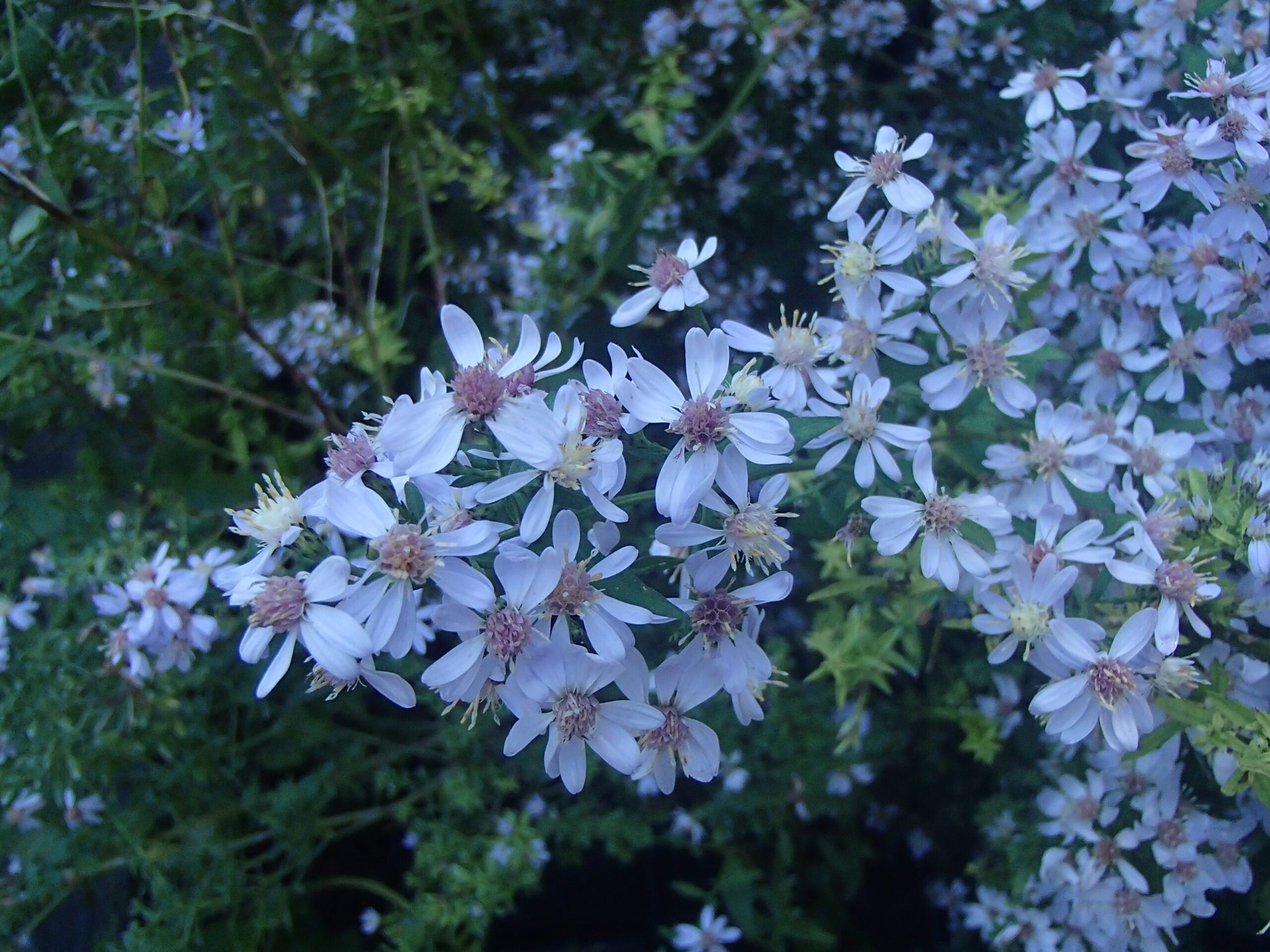The common Blue Wood Aster (of which ‘Avondale’ is a cultivar) is an herbaceous perennial native to a huge swath of north-central-eastern North America, and the counties in NC where it is reported represent the southeastern tip of its range. Found in dry to moist (well drained) deciduous woodlands and woodland borders, and sunny to semi-shaded areas along streambanks, it lends itself to cultivation in a wide range of shady garden transitional habitats where color and wildlife support are welcome. The flowers, from August to October, are composites typical of Asters, with bluish ray florets and light yellow disc florets that eventually turn purple. Grown in a sunny perennial bed, the plant habit is upright, but grown en masse along a shady forest edge, it tends to arch over in a sweep. Blue Wood Aster attracts a very long list of insects feeding on both flowers and foliage and where it is allowed to spread and is more decumbant and carpetlike, it provides cover for small mammals and ground nesting birds.
The flowers of the cultivar of Blue Wood Aster called ‘Avondale’ are reliably more blue than the straight species, and in our experience the deeper blue shades for both species and cultivar are encouraged by shady conditions. The USDA plant distribution map linked below is for the species.

